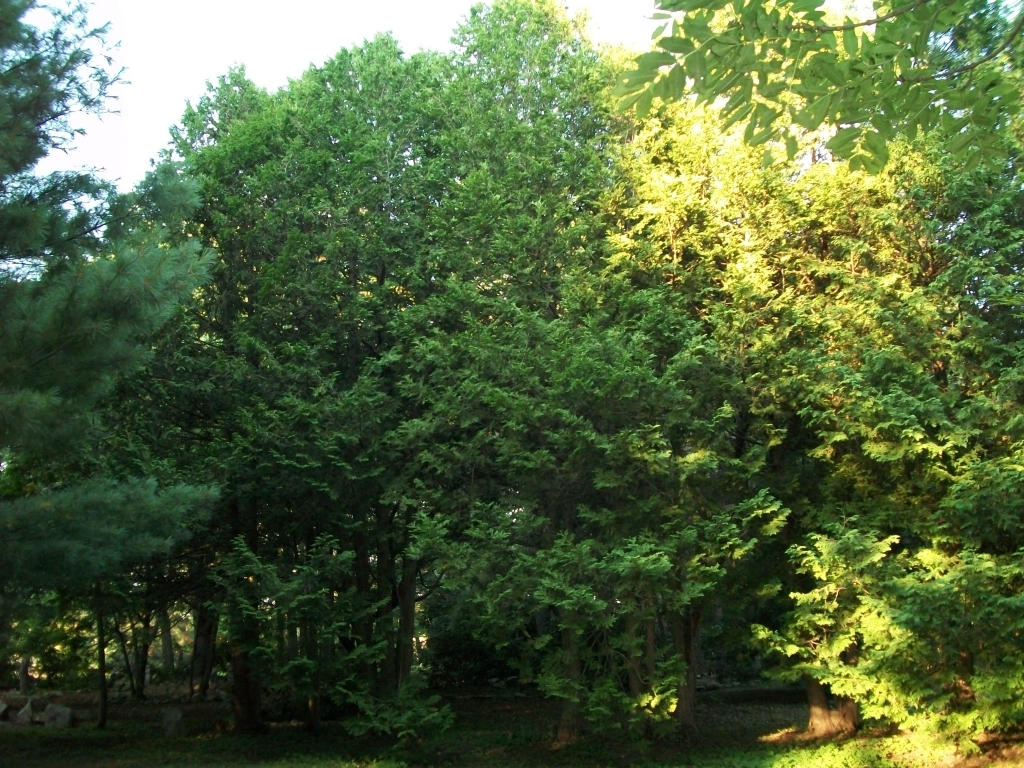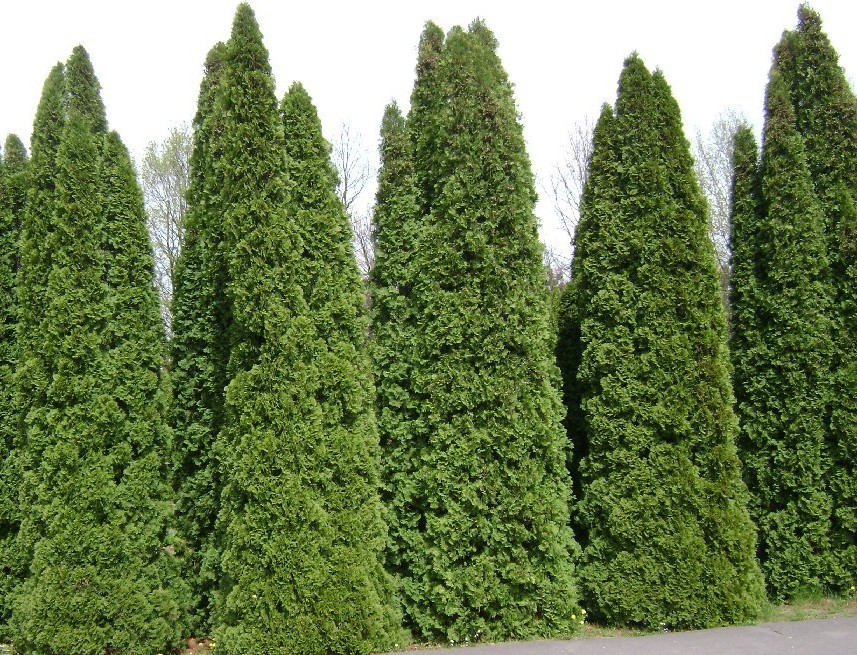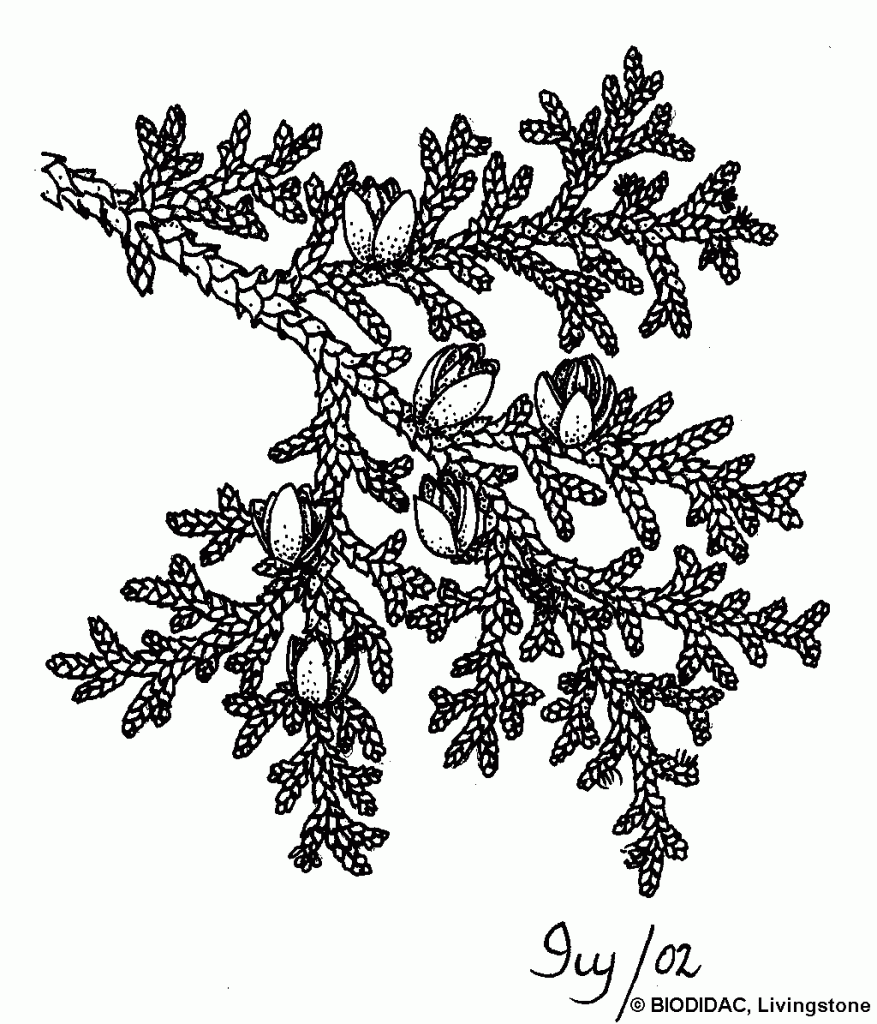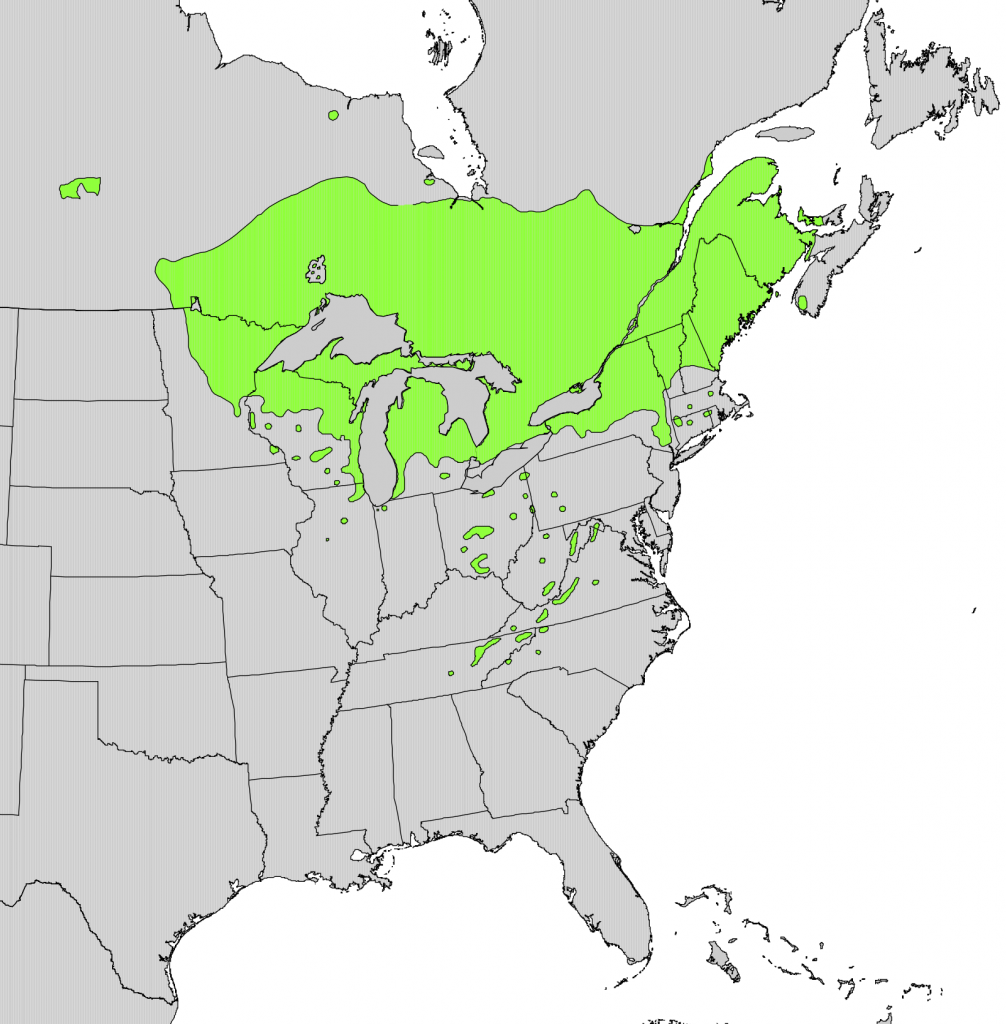
Thuja occidentalis as described in 1753 by Carolus Linnaeus (1707-1778), in Species Plantarum 2, is commonly known as arborvitae, a name which is particularly used in the horticultural trade in the United States. It is Latin for "tree of life" - due to the supposed medicinal properties of the sap, bark and twigs. Despite its common names, it does not belong to the cedar genus, nor is it related to the Australian white cedar, Melia azedarach. It is an evergreen coniferous tree, in the cypress family Cupressaceae,
Description. Eastern arborvitae is an evergreen coniferous species of tree with fan-like branches and scaly leaves. Unlike the closely related species Thuja plicata, it is only a small tree, growing to a height of 30 to 60 feet (10 - 20 m) tall with a trunk up to 1.3 feet (0.4 m) in diameter at breast height, exceptionally to 100 feet (30 m) tall with a 5 foot (1.6 m) trunk diameter. The tree is often stunted or prostrate.
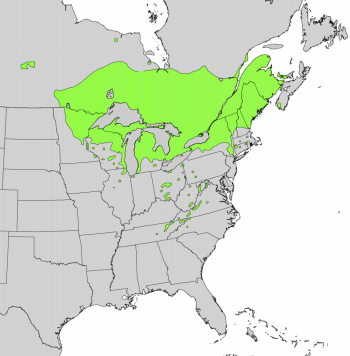
Distribution. This species is native to Canada - Manitoba, Ontario, Québec; Prince Edward Island, New Brunswick and Nova Scotia. In the USA - Minnesota, Michigan, Wisconsin, Illinois, Indiana, Ohio, Kentucky, Tennessee, North Carolina, Virginia, West Virginia, Maryland, Pennsylvania, New York, Connecticut, Massachusetts, Vermont, New Hampshire, Maine; growing at elevations up to 2,800 feet (0 - 900 m) above sea level on mostly calcareous substrates, neutral to basic swamps, shores of lakes and rivers, uplands, cliffs, and talus.
T. occidentalis is widely used as an ornamental tree, particularly for screens and hedges, in gardens, parks and cemeteries. Over 300 cultivars exist, showing great variation in colour, shape and size, with some of the more common ones being: 'DeGroot's Spire', 'Ellwangeriana', 'Hetz Wintergreen', 'Lutea', 'Rheingold', 'Smaragd' (a.k.a. 'Emerald Green'), 'Techny', and 'Wareana'. It was introduced into Europe as early as 1540.
